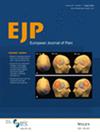Lifestyle Behaviours and Future Healthcare Utilisation for Musculoskeletal Pain in Young Adults: A Cohort Study of Norwegian University Students With Three-Year Follow-Up
Abstract
Background
It is unclear whether lifestyle behaviours influence use of healthcare for musculoskeletal pain in young adults. This study examined if lifestyle behaviours among college/university students were associated with future healthcare utilisation for musculoskeletal pain.
Methods
Data from the Students' Health and Wellbeing Study (SHoT2018) were linked with the Norwegian Registry for Primary Health Care, comprising 31,358 college/university students. We analysed associations of physical activity level, sleep duration, alcohol consumption, smoking, illicit drug use and cumulative adverse lifestyle behaviours with healthcare utilisation for musculoskeletal pain over the following three years, including ‘any use’, ‘high use’ and for back and neck pain specifically.
Results
High physical activity levels, compared to recommended levels, were associated with a higher risk of ‘any’ healthcare utilisation for musculoskeletal pain (females: RR 1.14, 99% CI [1.04–1.25]; males: RR 1.20, 99% CI [1.07–1.36]); below recommended physical activity levels were associated with a lower risk (females: RR 0.90, 99% CI [0.85–0.96]; males: RR 0.84, 99% CI [0.76–0.93]). Illicit drug use was associated with a lower risk of healthcare utilisation for neck pain in females (RR 0.77, 99% CI [0.62–0.97]). Four or more adverse lifestyle behaviours, compared to ≤ 1, were associated with a lower risk of high healthcare utilisation for musculoskeletal pain (females: RR 0.66, 99% CI [0.48–0.90]; males: RR 0.68, 99% CI [0.48–0.97]) and a lower risk of healthcare utilisation for neck pain in females (RR 0.63, 99% CI [0.41–0.97]).
Conclusions
Associations between college/university students' lifestyle behaviours and healthcare utilisation for musculoskeletal pain were identified, but with some unexpected patterns. Future research should explore long-term effects of these behaviours on healthcare utilisation for musculoskeletal pain.
Significance
High levels of physical activity among college and university students were associated with a greater risk of seeking healthcare for musculoskeletal pain within the following three years. Illicit drug use was associated with a lower risk of seeking healthcare for neck pain in females. Surprisingly, the presence of many adverse lifestyle behaviours appeared to be associated with a lower risk of healthcare utilisation for musculoskeletal pain, particularly healthcare contacts for neck pain in females and repeated healthcare contacts for musculoskeletal pain in general.

 求助内容:
求助内容: 应助结果提醒方式:
应助结果提醒方式:


